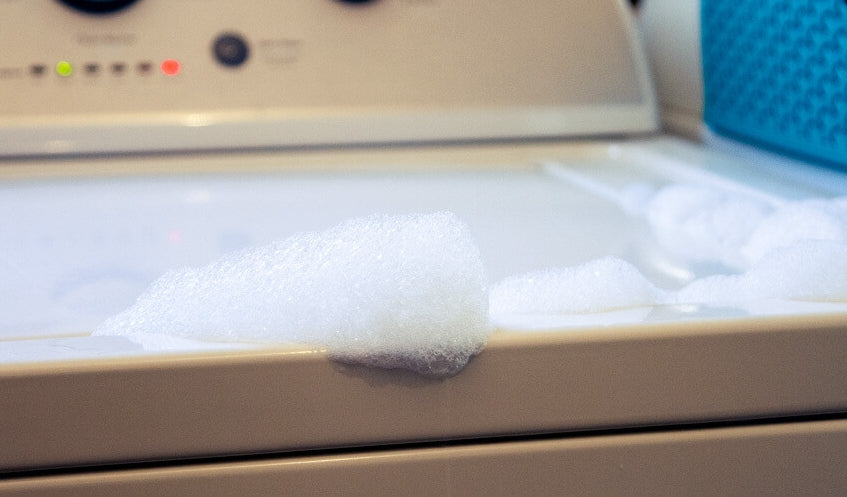
What should we know about low suds laundry detergent in daily life?
Share
In our daily pursuit of cleanliness and freshness, the choice of laundry detergent plays a pivotal role. One variant that has gained increasing popularity is low suds laundry detergent. Unlike traditional detergents that produce copious amounts of suds, low suds laundry detergent are formulated to minimize foam during the washing process. This unique characteristic brings about a range of benefits, influencing our laundry routines and overall cleaning experience.
In this exploration, we'll delve into the key aspects of low suds laundry detergent in our daily lives. From understanding how it works to its impact on clothing, appliances, and the environment, we'll unravel the reasons behind the growing preference for these innovative laundry solutions. Join us on this journey to discover the practical implications and advantages of incorporating low suds detergents into our everyday laundry routines.
1. Is high suds equal to high effect?
When we wash the clothes by hand, we will tend to use high sud product. For many of us, the more sud it produces, the better the laundry effect. So, Is it correct or not?
High suds laundry product has strong cleaning power and can deeply remove stains. It is suitable for clothes with heavy oil stains, but it is difficult to clean with too many suds. The high suds is due to its surfactant component, which can easily harm the skin and damage clothing fibers.
The high sud liquid detergent will easily cause the suds to overflow. Also, too many suds can reduce the friction between the washing machine and clothes which leads to reduced detergency.
For most clothes of the family, not only for our clothes but also for the washing machine, a low-sudsing laundry detergent is a better choice.
2. What do we learn about low suds laundry detergent
Low suds laundry product is non-irritating for human in total. It is suitable for clothes with relatively few oil stains and is relatively easier to wash. Low suds does not hurt hands, does not damage fibers, saves water and is environmentally friendly.Low suds laundry detergent is a laundry detergent that produces lower suds under the action of surfactants. Less suds makes rinsing easier and saves water. The active ingredient of laundry detergent is mainly non-ionic surfactant. Its structure includes hydrophilic end and lipophilic end. The lipophilic end can bind to stains.
low-sudsing laundry detergent has a better washing effect than high-sudsing laundry detergent and has fewer suds. The so-called low-sudsing laundry detergent refers to the addition of a certain amount of soap base and a non-ionic surfactant called polyether on the basis of ordinary laundry detergent. When these two substances are mixed with sodium alkyl benzoate, a synergistic effect will be produced between the molecules so that the wetting, dispersing, solubilizing and other abilities closely related to detergency are increased compared to the original single species.
In this way, it not only increases the detergency of the laundry detergent but also inhibits the sodium alkyl benzene sulfonate to create suds. In addition, the synergistic effect will cause the suds's membrane to become thinner and eventually cause the created suds to burst. This is why low-sudsing laundry detergent produces a small amount of suds and disappears quickly. This is also the real reason why low-sudsing laundry detergent is suitable for machine washing.
3. Other aspects of the low suds laundry detergent
In addition, we should also understand the difference between high sudsing and low sudsing.
We should not simply look at the amount of suds, but the content of active substances. For example, the active content of low suds laundry detergent reaches more than 25%. When people go to supermarkets to buy laundry detergent, they can determine the active content and the difference between high and low suds from the packaging label of the laundry detergent.
Generally, laundry detergent packaging has a mark indicating low suds or high suds properties. The text mark mainly indicates the various functions of the laundry detergent: such as high suds, low suds, whether to add enzymes, etc. As a measure of the washing effect of laundry detergent, low sudsing means cleaner rinsing and the effect is more obvious when machine washing.
4.Why Malory laundry detergent is the best low suds laundry detergent in Australia
Malory Laundry Detergent stands out as Australia's premier low-suds powder for several compelling reasons. Enriched with premium Australian tea tree oil and essential extracts of South African moringa seeds, it harnesses broad-spectrum antimicrobial properties, combatting microbial threats and eliminating residual odors. The inclusion of Italian probiotics, lactobacillus, ensures a 99.9% eradication of harmful bacteria, forming a natural barrier and enhancing defense mechanisms.
With highly active complex biological enzymes, it tackles stubborn stains like blood, secretions, and urine, employing efficient targeted stain-removal technology. Infused with the luxurious fragrance of blue wind chimes, it not only eliminates awkward odors but leaves a subtle floral scent post-wash, creating a delightful aromatic experience.
This concentrated formula requires only 4-5 drops for an outstanding clean, catering to 3-5 garments. Crafted from natural coconut plant extracts, it guarantees gentle yet effective stain removal, preserving the integrity of delicate garments. The addition of 25% active ingredients ensures deep cleaning, leaving clothes soft, fluffy, and offering 48-hour long-lasting protection against bacteria. With a pH-balanced, mild, non-irritating formula, it's suitable for babies and pregnant women, free from chemicals like fluorescent agents, phosphates, whitening agents, thickeners, and mercury. Malory is the epitome of a laundry detergent that prioritizes effectiveness, gentleness, and environmental consciousness.